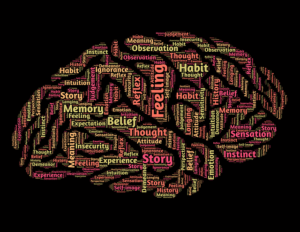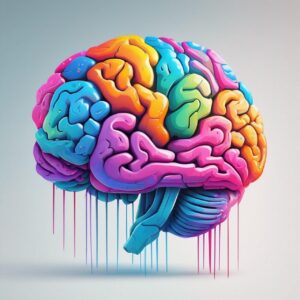EMDR (Eye Movement Desensitizing and Reprocessing)
What is EMDR?
EMDR is an extensively researched psychotherapy that is effective in treating trauma, difficult experiences, emotional distress, and other mental health issues. Discovered in the late 1980’s, Francine Shapiro made the connection between eye movements and decreasing intensity of persistent upsetting memories. What started as a hypothesis, Dr. Shapiro developed a formal therapy process that has been demonstrated as an effective treatment.
Why Does It Work?
As with most things related to the human brain, we have a limited understanding of the complex inner workings and mechanics. However extensive research has been done regarding the positive outcomes of EMDR Therapy. Our brain is able to naturally recover from traumatic events. This process involves communication between the amygdala (the alarm system), the hippocampus (this system helps with learning), and the prefrontal cortex (which analyzes and controls behavior). Many times we experience an event and this system can manage and resolve it spontaneously, other times it may not be processed without help. When it is not processed distressing emotions, thoughts, and even images can present. EMDR helps the brain process allowing normal natural healing to resume.

How it Works
Many psychological difficulties are a result of distressing life experiences that were not processed or stored properly in the brain and are unprocessed or “stuck”. The mind can often heal itself naturally, the same way as the body does. For example, if you have a cut your body will naturally close the wound and heal. Though, if something gets stuck in the cut, it will likely become infected. The stuff that was stuck in the cut will need to be removed before the body’s natural healing can continue. The brain heals in a similar way. If we experience something distressing most of the time our mind can process it naturally and does not hold onto the distress. Sometimes an adverse experience occurs or repeated experiences where the brain becomes overloaded and does not process the experience correctly, it gets “stuck” which can lead to intense suffering. EMDR helps remove the block. Utilizing repeated sets of eye movements (Bilateral movement) the memory/distress that was blocked is then processed and tends to change in a way where it loses its intensity and simply become a neutral feeling; it becomes an event that happened in the past. Other memories and distress may also heal at the same time thus leading to rapid improvements.

The EMDR Process
- We will complete an intake assessment where I will gather details about you, your experiences, goals, and desired changes.
- Together we will increase your ability to manage distress. This step involved learning some coping skills.
- We will discuss where we want the focus to be, in EMDR we call this “the target”. Finding the target often involves giving attention to a memory, image, belief, emotion, and body feeling.
- “Phase 4 of EMDR” is what people often consider as EMDR. This phase involves focusing on the “target” while simultaneously focusing on external stimulus (usually using back and forth eye movements). This back and forth movement will last for a short time and then stop, thats considered a set. You will then be asked to report what comes to mind after each set. The sets of eye movements, sounds, or taps will continue to be repeated until there is no longer distress.
- When there is no longer distress we will check in with your body to see if there are any uncomfortable physical sensations
- We will then turn our focus to a more positive thought/cognitive shift and install it.
- We will return back to other targets, step 3, and continue the EMDR process as needed.

Get to the root of the issue and get back to who you really are.
Free yourself from being stuck.
EMDR is Effective in Treating:
Anxiety, Panic Attacks, and Phobias
PTSD
Chronic Illness medical issues
Sleep Problems
Traumatic Experiences
Depression and Bipolar
Pain
Negative Beliefs
Anger
Pain
Performance Fear/anxiety
Grief and Loss

EMDR is Endorsed by:
The World Health Organization
American Psychiatric Association
U.S. Department of Veteran Affairs
American Psychological Association
National Alliance on Mental Illness
International Society for Traumatic Stress Studies
National Institute for Health Care and Excellence
References and Resources
F. Shapiro & M.S. Forrest (2004) EMDR: The Breakthrough Therapy for Anxiety, Stress and Trauma. New York: BasicBooks.
About EMDR:
https://www.emdria.org/about-emdr-therapy/
Case Conceptualization:
https://www.apa.org/ptsd-guideline/resources/eye-movement-reprocessing-example
Recent Research:
https://www.emdria.org/about-emdr-therapy/recent-research-about-emdr/
Trauma

Possible Impact of Trauma:
- Unpredictable Emotions
- Difficulty Being Present
- Feeling Hopeless
- Trouble Concentrating
- Trust Issues
- Headaches
- Nausea
- Sleep Disturbances
- Flashbacks
- Depression
- Anxiety
- Difficulty Regulating Emotions
- Avoidance
- Irritability
- Easily Startled
- Nightmares
- Difficulty Remembering Details
Meaning is the way someone makes sense of everything including themselves and the world around them. Meaning is fluid and can change with our beliefs and experiences.

You can gain an understanding of how your experiences have shaped the world around you. You and I will develop new ways of thinking and utilize EMDR to reprocess and desensitize thoughts, emotions, and memories allowing your mind and body to heal. The outcome is resilience and a cognitive shift- a significant change toward wellness.
Trauma can be anything that negatively impacts the way you see yourself, others, and the world around you

A Traumatic Memory Has 3 Components:
- Sensory Memory (Images, Sounds, e.g.)
- Example: The look in the attacker’s eyes
- Emotional Memory (Emotion, Body Memory)
- Example: Numbness, and intense fear
- Meaning
- Example: I’m helpless… I can’t trust others
After EMDR: There is no longer a feeling of numbness and the fear has significantly decreased. When thinking about the event it is no longer vivid, it’s more distant. Meaning has changed to “I’m not helpless, I am resourceful and I can trust others”
DBR (Deep Brain Reorienting)
What is DBR?
Deep Brain Reorienting (DBR) is a gentle yet powerful therapeutic approach that supports emotional healing and well-being. Rather than relying on detailed storytelling, DBR works with the body’s natural, instinctive responses that occur before thoughts or emotions even arise. These early brain-based patterns can shape how we respond to stress, connection, and challenges in the present.
Developed by psychiatrist Frank Corrigan, DBR offers a way to safely access and shift deep-rooted emotional responses. It can help you feel more grounded, settled, and connected—without needing to revisit every past experience. Many people find DBR to be a meaningful and lasting support on their path toward greater ease and clarity.

DBR works deeper—at the level of the brainstem, where your body first senses and orients to threat or disconnection.
Think of it like this:
- Before you feel an emotion…
- Before you think a thought…
- Your body notices something—and then reacts.
By gently slowing down and tuning into the body’s earliest responses, DBR helps uncover and release patterns that may have been stuck beneath our awareness. This process supports the brain’s natural ability to heal and restore balance, allowing for lasting change to unfold from the inside out.
What does a DBR Session look like?
A DBR session is somatic body-focused, and slow-paced. It’s not about retelling or reliving traumatic memories—it’s about attuning to the body’s internal sensations and the felt sense of the body’s response. The therapist acts as a guide- helping you notice what your body already knows.
You can expect a process of focusing on subtle physiological shifts in your body. Unlike traditional talk therapy, the DBR process focuses on noticing and responding to your body’s internal cues and sensations. While you may share some aspects of your experience with your therapist, much of the work is done through silent observation of your physiological and emotional states.
- You’ll be guided to notice (sometimes subtle) physical sensations
- There’s no pressure to talk in detail about your past or tell your whole story.
- The process is slow, safe, and always guided with care and attunement.
- Many clients say DBR helps them feel calmer, more present, and more themselves.


“The roots of trauma lie in our instinctual physiologies. As a result, it is through our bodies (as well as our minds) that we discover the key to its healing… The healing of trauma is a natural process that can be accessed through an inner awareness of the body.”
—Peter Levine
References:
- Corrigan, F. M., & Christie-Sands, J. (2020). An innate-based therapeutic approach: Deep Brain Reorienting. European Journal of Trauma & Dissociation, 4(3), 100149.
- Kearney, B. E., Corrigan, F. M., Frewen, P. A., et al. (2023). A randomized controlled trial of Deep Brain Reorienting: A neuroscientifically guided treatment for PTSD. European Journal of Psychotraumatology, 14(2), 2240691.
By gently slowing down and tuning into the body’s earliest responses, DBR helps uncover and release patterns that may have been stuck beneath our awareness. This process supports the brain’s natural ability to heal and restore balance, allowing for lasting change to unfold from the inside out.
